Polar Vantage V2 review: Train efficiently and recover faster with this awesome running watch
The Polar Vantage V2 has a light aluminium body, comes equipped with new tests and plenty of data to pore over
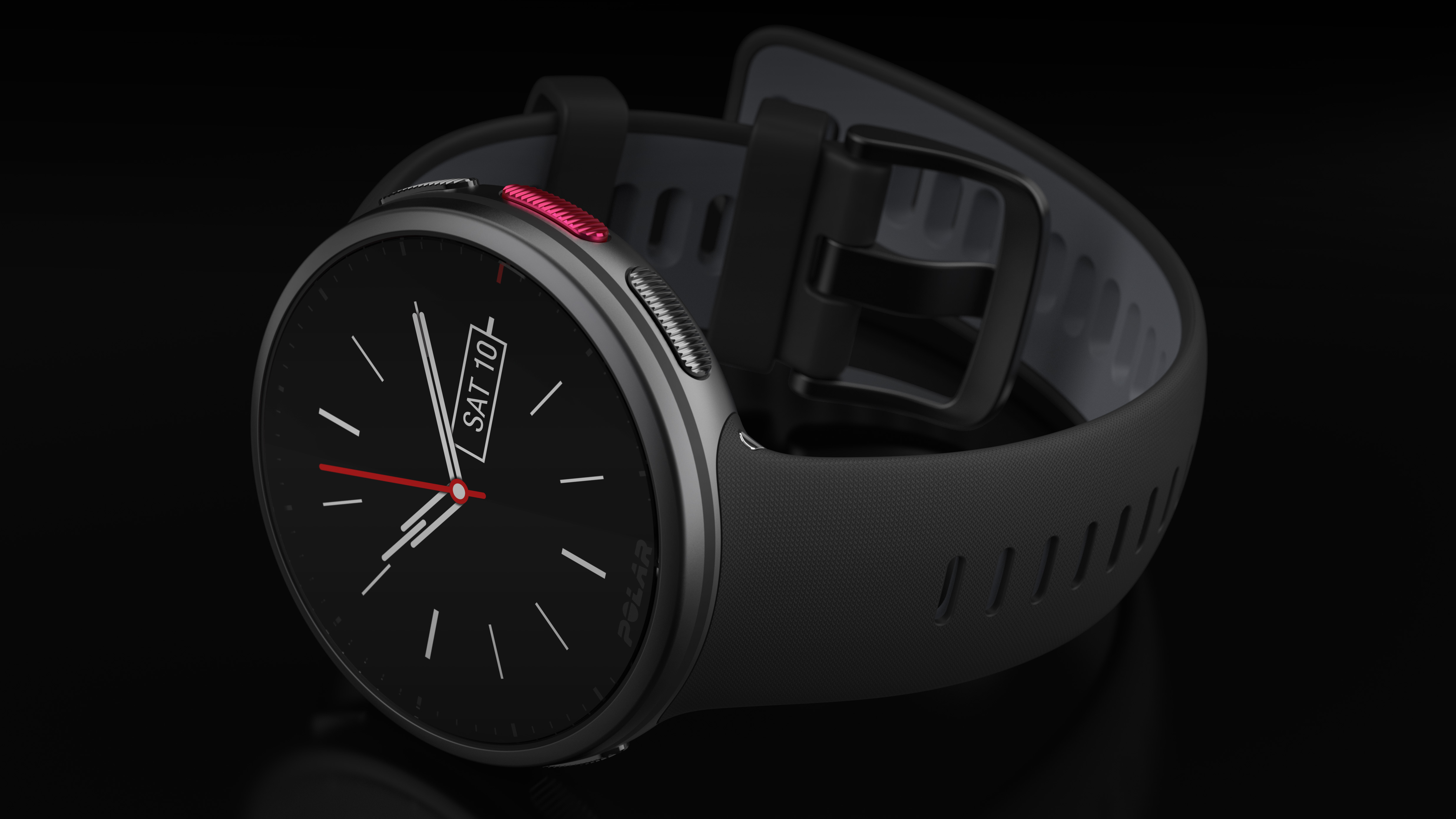
Despite the confusing navigation scheme, the Polar Vantage V2 is worth your attention, especially if you like data and lots of it. The new running and cycling performance tests provide exciting insights into training, and they can also help you optimise recovery more efficiently.
-
+
'Always on' screen
-
+
Plenty of data to pore over
-
+
New tests are a great add-on
-
+
Better build quality than Vantage V
-
+
Precise
-
-
Button+touch navigation is still a bit confusing
-
-
Quite pricey
-
-
Smart features are mostly training-focused
-
-
Battery life is far from amazing
Why you can trust T3

Polar Vantage V2 review TL;DR: if you want to get better at running using a running wearable, the Polar Vantage V2 is your best option. No other watch provides so much data to work with right now.
What I love about running watches is that even the best running watch is available to quite literally anyone. You can't drive the fastest Formula 1 cars or ride top-level MotoGP bikes, but you will see top athletes using the best running shoes and watches available to you right now. And many of these athletes – runners, cyclists and triathletes – will probably sport a Polar Vantage V2.
The Polar Vantage V2 is one of the most hardcore multisport watches on the market: it is lightweight yet sturdy and offers all the data an athlete might need to optimise training, recovery, fuelling and more. It also provides many tests, such as the new running and cycling performance test, offering a snapshot of your performance at any given time during training.
Want to know the difference between the Polar Vantage M2 and the Vantage V2? Found out here: Polar Vantage M2 vs Vantage V2. We also compared the V2 with the Grit X adventure watch here: Polar Grit X vs Vantage V2.
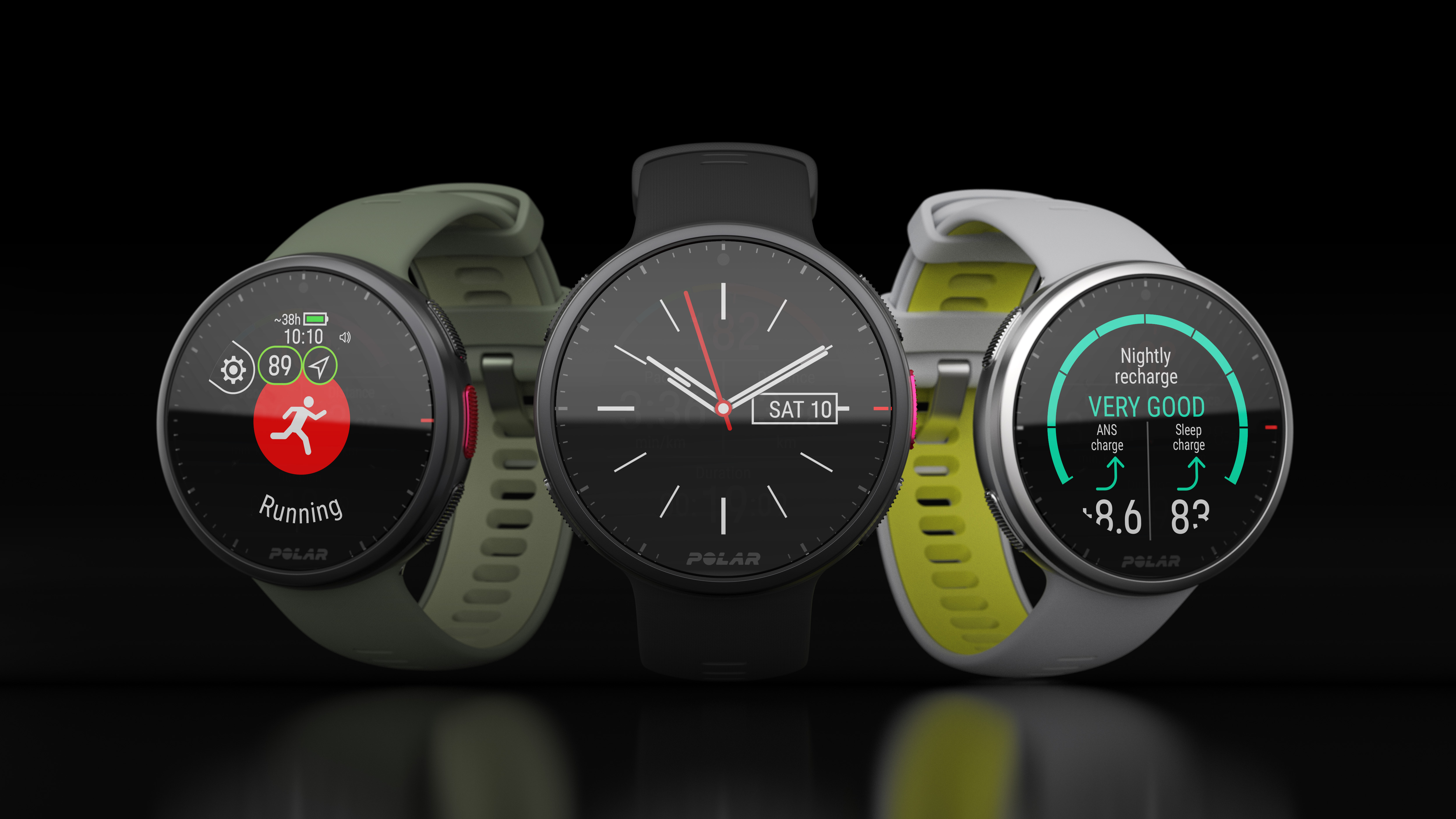
Polar Vantage V2 review: Price and availability
The Polar Vantage V2 is available now at Polar US / Polar UK for a recommended retail price of $499.95 / £449.
The Polar Vantage V2 is available in three colourways, including Black and Black, Silver and Gray-Lime and Black and Green.
The watch is also available bundled up with the Polar H10 heart rate strap (needed for the Orthostatic test) for the recommended retail price of $549.95 / £489.
The Polar H10 won the T3 award in the best heart rate monitor category.
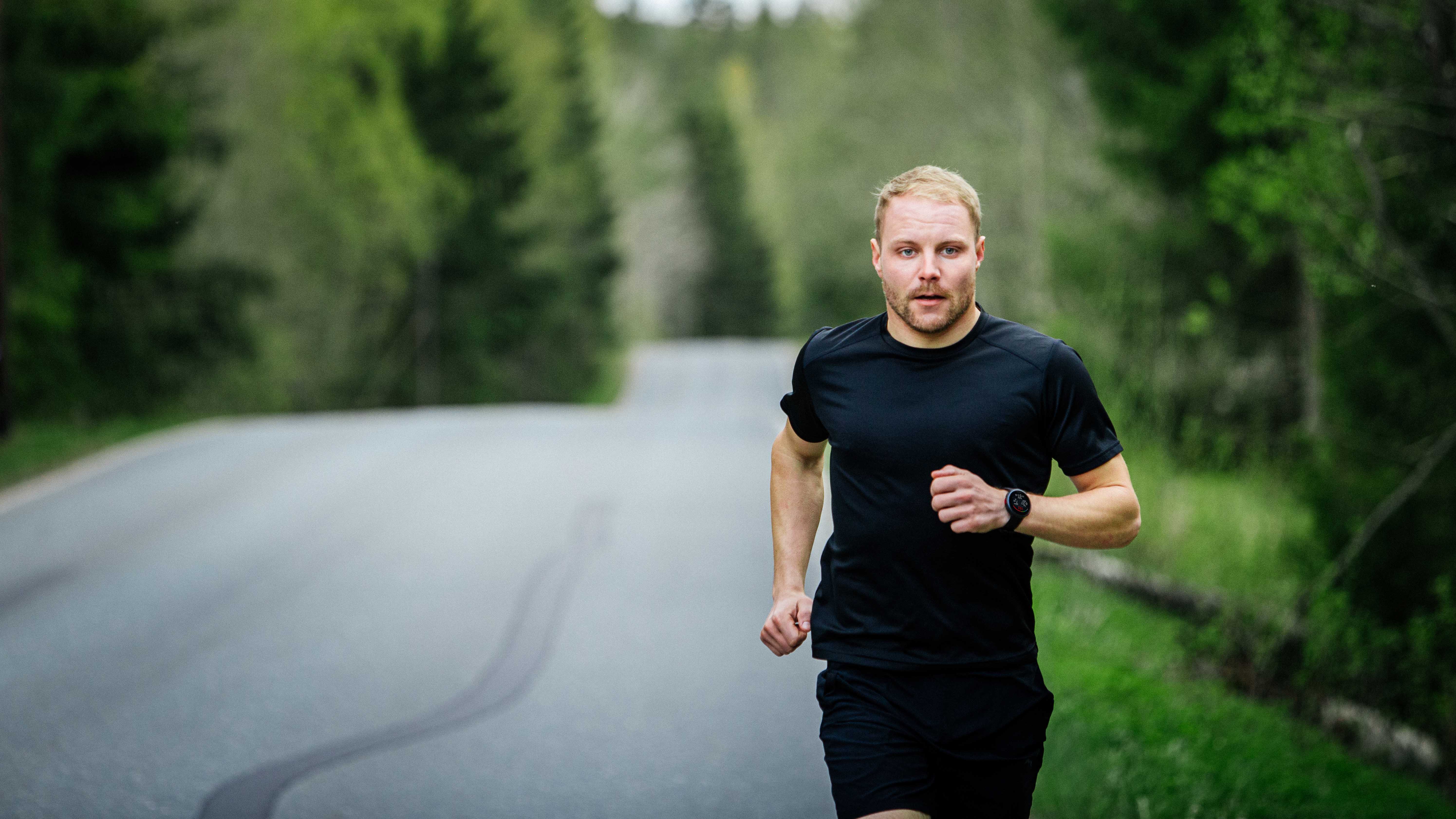
Polar Vantage V2 review: Build quality and ergonomics
The new Polar Vantage V2 looks eerily identical to its predecessor: it's more or less the same size, has the same button layout and has the same non-hinged strap connection. Nevertheless, the Vantage V2 is actually way lighter: it's only 52 grams with the strap, which is obviously way heavier than the Coros Pace 2 and even the Garmin Forerunner 745, only just.
It is not a heavy watch, though, but I can imagine it bobbing slightly on a smaller wrist. The fact that the strap is not hinged probably makes it even harder for small-wristed individuals to find the right fit that's not too tight. The strap itself is made of lovely, soft silicone that's nice to touch and bends without breaking.
The button layout hasn't changed but the buttons are ever so slightly different: they look bigger and bulge out less from the bezel. The aluminium bezel itself, as well as the case, feels more premium and 'metallic'. The original Vantage V felt a bit too plasticky but that's not the case here.
The touchscreen navigation is still present, for better or worse. Having five buttons and the touchscreen is overwhelming, probably not as much as trying to use the control panel in the Chornobyl power plant but not as easy as having either a touchscreen or button control.
The one-button-plus-touchscreen operation worked perfectly fine for the Polar Ignite whereas here, it feels like Polar went back to sitting on the fence for a bit longer: the Vantage series is not button operated, nor is it touchscreen, but the combination of both, confusingly. You can argue that you can use either to operate the watch but it's the perfect example of the 'paradox of choice': I wish Polar made the decision for me about this.
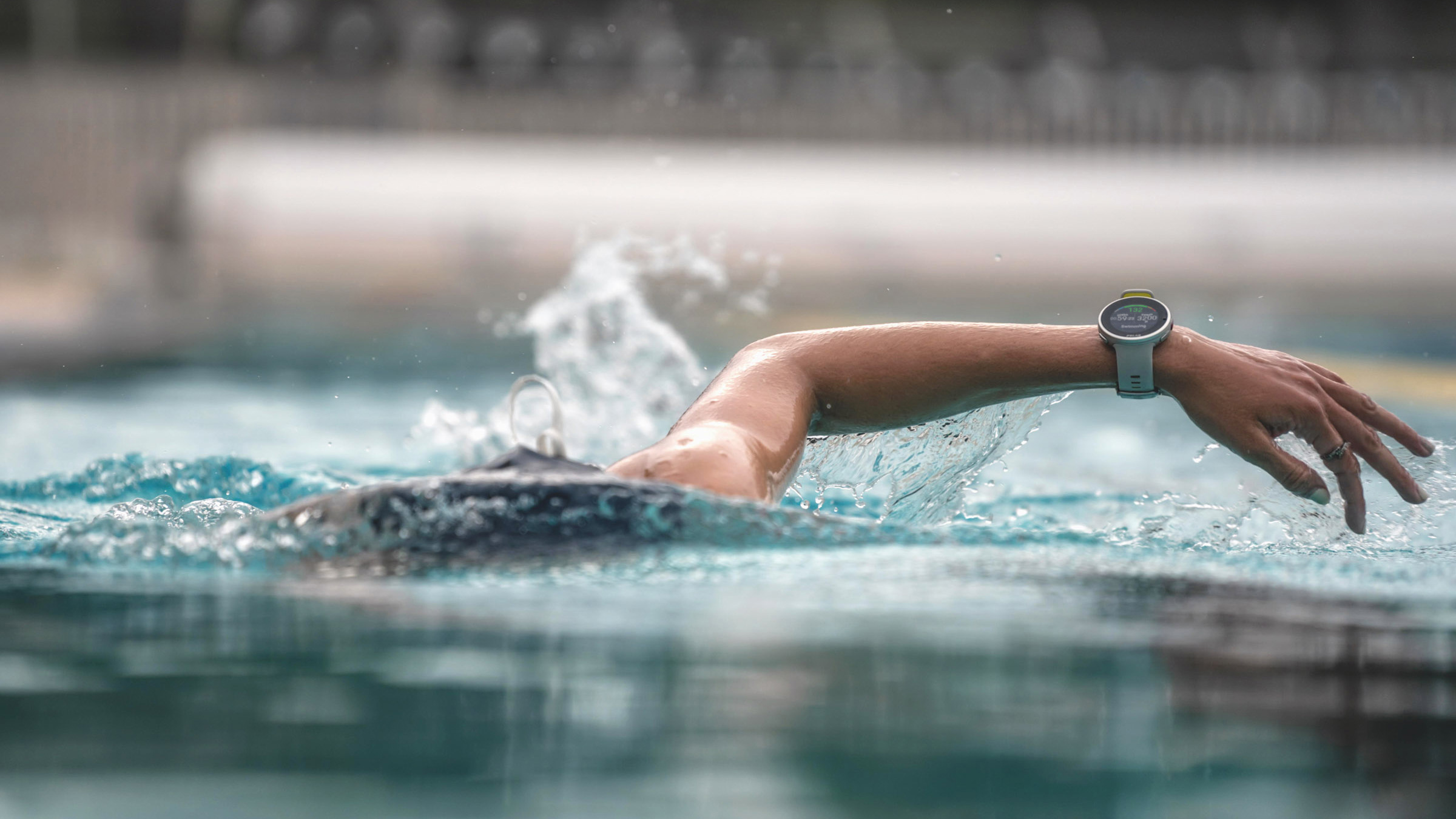
Polar Vantage V2 review: Features and user interface
What really sets the Polar Vantage V2 apart from the competition are the features and tests it offers for serious athletes. As well as including some features first introduced in the Polar Grit X outdoor watch, such as the HeelSplitter and FuelWise, the V2 also has an abundance of new features and tests of its own.
Among the returning features and tests you'll find the fitness test – determines VO2 max –, Serene – guided breathing sessions – and the Orthostatic Test, the latter of which I still don't quite understand but it helps with recovery from what I can tell. You will need a compatible heart rate monitor to perform this test e.g. the Polar H10.
The new, Vantage V2 specific tests include the running test, cycling test and leg recovery test. Not only do none of these require any external sensors but they also provide loads of useful data for runners (and cyclists) who are interested. For the record, I only tried the running test and the leg recovery test but even those two supplied more than enough information for me to work with.
The running test, which replaces the running power measurement found in the Vantage V, requires you to run at an ever-increasing pace until you can't keep up any longer. The watch sort of guides you throughout the process by providing 'audible cues' (beeps) when you're running too slow or fast compared to the target pace, although I ended up looking at the watch most of the time anyway during the test.
The results are completely worth the effort, though. You will learn what's your maximum aerobic power (MAP), maximum aerobic speed (MAS) and maximal oxygen uptake (VO2max), as well as what energy source you used at which point during the test and, of course, your heart rate plus cardio and muscle load. Using this test, you can also update your heart rate zones on the watch, similar to Garmin's lactate threshold test.
My favourite test is definitely the leg recovery test. This requires you to jump three times and it helps you see how your leg muscles have recovered from training. But really, it's just good fun to do, but make sure there is enough headspace above you before you start jumping around.
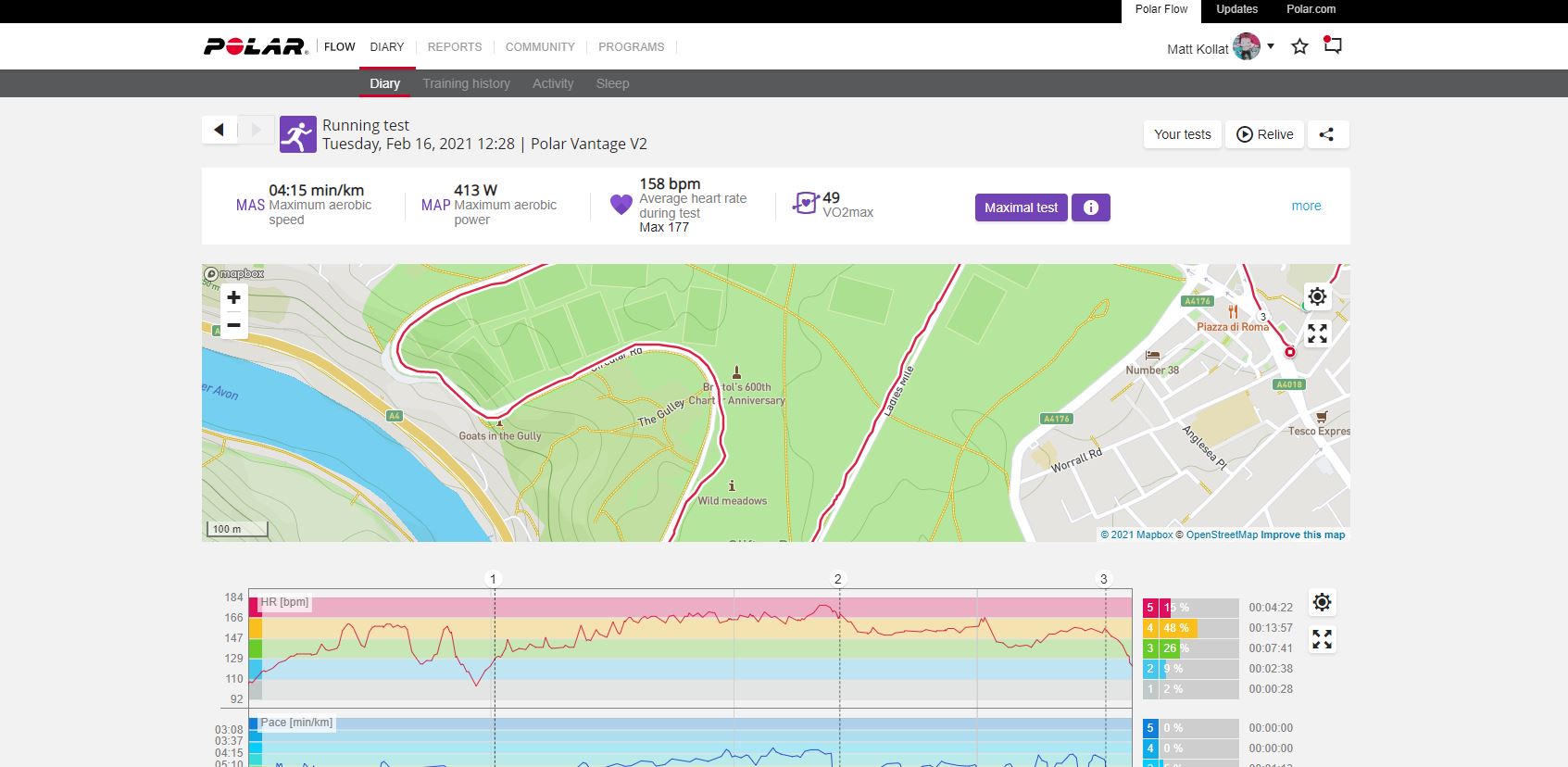
Polar Vantage V2 review: Activity tracking and precision
As you'd expect from a high-end multisport watch, the Polar Vantage V2 has a billion sport modes readily available on the watch, straight out of the box. Well, actually, you can 'only' store 20 sports modes on the watch but these can be swapped in and out in the Polar Flow app (Sports Profiles option).
The Polar Flow itself is still not my favourite running app but I appreciate it's extremely difficult to incorporate so much data in an attractive way on such a small screen. Unlike in the case of every other running app, it's recommended to use the Polar flow web app as it lays out data in a more comprehensible way.
The Polar Vantage V2 does a great job tracking both heart rate and global position. It uses the latest Polar Precision Prime optical heart rate sensor that incorporates different coloured LEDs to detect pulse accurately on different skin types plus four 'skin contact' sensors to make sure it only reads heart rate when the watch sits correctly on the wrist.
I found the heart rate readings generally accurate and there were no huge spikes in max/min heart rate readings either; a good sign that the watch doesn't try to read heart rate when it's not in the correct position on the wrist. Interestingly, I was testing the Polar Verity Sense (VS) for strength workout sessions and the heart rate readings from the VS and the V2 were different, not drastically but significantly, albeit the VS uses a different optical sensor.
The default global positioning system on the Vantage V2 is GPS+GLONASS which worked fine for me. As you can see from the cropped map above, the watch tracked my route nicely and even made note of when I went off the road to avoid cars. Most often, the V2 could even tell on which side of the road I was running.

Polar Vantage V2 review: Verdict
The more I think about the Polar Vantage V2, the more I appreciate its features. It might lack some more casual features you'd expect to see in a top-notch running watch, such as on-board music storage and maybe even NFC, but truth to be told, the Vantage V2 is for the hardcore crowd and they might not care all that much about these filthy casual frivolities anyway.
The Polar Vantage V2 is a watch of many qualities. Its built quality is excellent and definitely a step up from the original Vantage V. It has loads of useful tests and data for serious runners and cyclists to better their form and get ready for races more efficiently. Better still, most of the tests and data provided by the Vantage V2 can't be found elsewhere, making it all the more appealing for the information thirsty athletes.
It would have been great to see some improvements to the user interface and especially the navigation. Touch controls are still a bit laggy, although the screen felt a bit more responsive than the one found on the Vantage V. I find it funny when Polar boasts about the ability to choose from four watch faces for the Vantage V2 when Garmin has hundreds, if not thousands, of watch faces available to all of its watches.
I would certainly recommend the Polar Vantage V2 to anyone who would like to take their athletic performance to the next level: there aren't many wrist-wearables that provide quite as much data like this one.
For even more data, why not add the NURVV running insoles to the setup, or maybe even the Supersapiens glucose monitor? Go crazy.
Polar Vantage V2 review: Also consider
The Garmin Forerunner 745 is slightly cheaper than the Vantage V2 and it hasn't got all the tests but it's still a super-competent multisport watch geared towards triathletes. It's slightly lighter than the Vantage V2 but has the same (not too impressive) battery life.
You might also want to consider getting the Polar Vantage V which is around $140 / £125 cheaper than the V2 and hasn't got any of the new tests on board. It does measure running power on the wrist and has loads of recovery and training load features onboard, plus the very competent Precision Prime HR sensor.
Sign up to the T3 newsletter for smarter living straight to your inbox
Get all the latest news, reviews, deals and buying guides on gorgeous tech, home and active products from the T3 experts

Matt Kollat is a journalist and content creator who works for T3.com and its magazine counterpart as an Active Editor. His areas of expertise include wearables, drones, fitness equipment, nutrition and outdoor gear. He joined T3 in 2019. His byline appears in several publications, including Techradar and Fit&Well, and more. Matt also collaborated with other content creators (e.g. Garage Gym Reviews) and judged many awards, such as the European Specialist Sports Nutrition Alliance's ESSNawards. When he isn't working out, running or cycling, you'll find him roaming the countryside and trying out new podcasting and content creation equipment.
-
 Warning: Ciele’s refreshed Elite Collection may cause excessive garment envy on race day
Warning: Ciele’s refreshed Elite Collection may cause excessive garment envy on race dayFlex on your run crew with Ciele’s latest drop
By Matt Kollat Published
-
 Smeg adds a touch of navy sophistication to its iconic breakfast set
Smeg adds a touch of navy sophistication to its iconic breakfast setIt's a minimalist's dream
By Lizzie Wilmot Published
-
 My most anticipated Netflix movie of the year gets a wild new trailer
My most anticipated Netflix movie of the year gets a wild new trailerHavoc looks pretty unbelievable
By Max Freeman-Mills Published